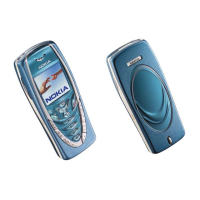System Management
308
7210 SAS-M, T, R6, R12, Mxp, Sx, S Basic System
Configuration Guide
© 2021 Nokia.
Use subject to Terms available at: www.nokia.com
3HE 17358 AAAB TQZZA
6.6.3 1830 VWM Configuration Guidelines and
Restrictions
The 7210 SAS manages the 1830 VWM CWDM/DWDM clip-on device, and
inventory, and displays information about the clip-on device including part numbers,
clip-on type, manufacturing dates, firmware revision, and status of alarms. The
7210 SAS also supports provisioning of modules that can be inserted into the
available slots on the 1830 device. The following are the configuration guidelines and
restrictions that apply to the 1830 VWM.
• The shelf-ID on the rotary dial must be set to a numeric value between 1 to 7.
Digits higher than 7 are not supported by 7210 SAS devices.
• The 1830 VWM clip-on device is connected to a master-shelf (for example, a
7210 SAS device). Each clip-on device is identified using the shelf ID set on the
rotary dial provided on the device. To aid inventory management, the user must
configure the vwm-shelf-id of the clip-on device attached to the USB interface or
the OMC interface. The vwm-shelf-id must match the shelf ID that is set using
the rotary dial on the clip-on device. The 7210 SAS uses the configured vwm-
shelf-id to communicate with the clip-on device. If the two shelf IDs do not match,
the 7210 SAS cannot interact with other devices and is unable to provide
information about the device. The 7210 SAS cannot detect a mismatch between
the configured vwm-shelf-id and the shelf ID set on the rotary dial.
• The 7210 SAS provides a show command to display the alarm status
information communicated by the clip-on device.
• The 7210 SAS only recognizes approved USB mass storage and optical clip-on
devices need as valid devices when plugged in the USB port. All other devices
are treated as unsupported and cause the 7210 SAS to generate an error log. A
shelf created by the user is operationally down when an unrecognized device is
plugged into the USB port.
• OMC ports must be used for 1830 DWDM device management on 7210 SAS-T
and 7210 SAS-Mxp. USB ports are not supported on these platforms.
• Management of the 1830 DWDM device is not supported on the 7210 SAS-R6
and 7210 SAS-R12.
• Only a single 1830 CWDM or DWDM device can be managed using the USB
interface.
• The management capabilities available through USB and OMC port are similar.
• The first 1830 DWDM device that is connected to the OMC port or the USB port
of the 7210 SAS node must be equipped with active DWDM controllers; it must
not be a passive 1830 DWDM device. However, subsequent chassis connected
to the first 1830 DWDM device in a stacked configuration are allowed to be
equipped with passive DWDM controllers. For more information about stacking
configuration, refer to the 1830 VWM product manuals.

